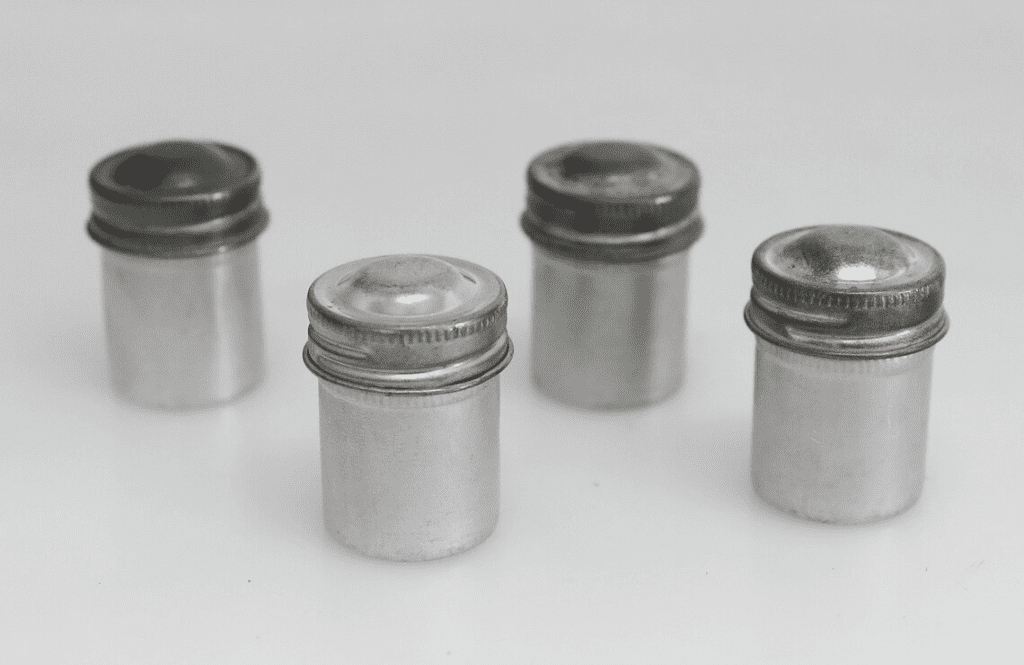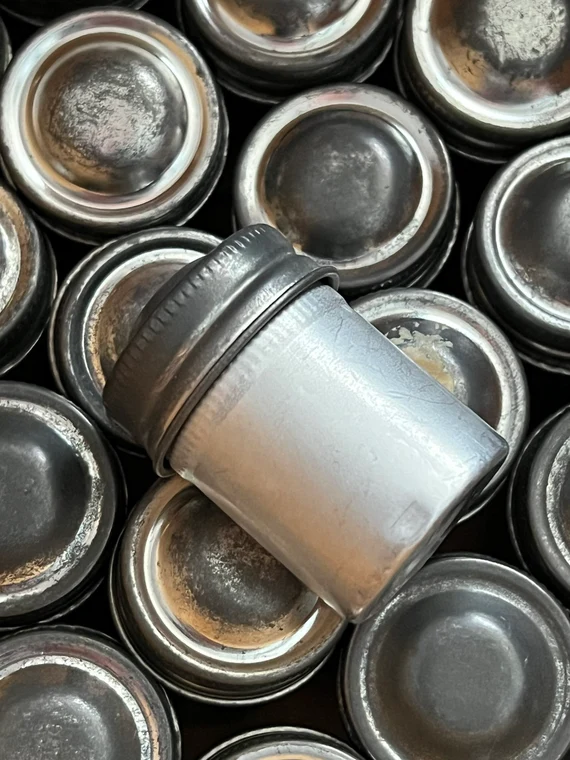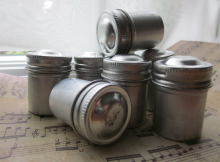In the age of digital photography, vintage metal Kodak film canisters hold a special place for many photography enthusiasts. While these small containers might seem like simple storage units, they carry a unique blend of nostalgia, practicality, and artistic value. In this article, we’ll explore the history, design, functionality, and various uses of these classic 35mm film canisters.

A Brief History of 35mm Film Canisters
Kodak played a pivotal role in making 35mm film the industry standard. Introduced in the late 19th century by George Eastman, the 35mm film format was designed to be versatile, reliable, and portable—qualities that made it popular among professional and amateur photographers alike. By the mid-20th century, 35mm film canisters had become synonymous with photography, serving as protective vessels for precious rolls of film.
Anatomy of a Kodak 35mm Film Canister
Kodak’s 35mm film canisters are known for their sturdy metal construction. These canisters are designed to protect film from light, moisture, and physical damage. The main components of a canister include:
- The Cylindrical Body: This is where the film is housed. It is typically made from metal, ensuring durability and shielding the film from environmental factors.
- The Cap: The cap is designed to fit snugly on the canister, preventing light leaks and accidental exposure. It also makes loading and unloading film seamless.
- The Lightproof Seal: Inside the cap, there is a lightproof seal that keeps the film intact until it is ready to be developed.
This design, though simple, has remained effective for decades, ensuring that photographers can capture and preserve their work without risk of film damage.
Protection and Preservation: The Role of Film Canisters
Film canisters are not just containers; they serve as the first line of defense in film preservation. Here’s how these small yet mighty canisters protect the film:
- Light Protection: One of the canister’s main functions is to prevent light from reaching the film. Even a brief exposure to light can ruin an entire roll, making the light-tight seal of a canister crucial.
- Environmental Protection: Besides light, film is sensitive to moisture, dust, and temperature changes. The metal canisters are effective at shielding the film from these elements, allowing photographers to safely store film for extended periods.
In short, without these protective canisters, the integrity of 35mm film could not be maintained, compromising the final photographic output.
The Tangible Appeal of Film Photography
Unlike digital photography, 35mm film offers a tangible connection to the art of photography. The process of loading film into a camera, manually winding it, and waiting to see the developed images brings a sense of anticipation and involvement that digital photography can’t replicate. Here’s why many photographers are returning to film:

- Unique Aesthetic: The grain, texture, and color saturation of film create a distinctive look that digital filters often try to mimic. The inherent imperfections and variations add character to the images, making each photo feel more personal and authentic.
- Hands-On Process: The process of developing and printing film photographs is an art form in itself, allowing photographers to have greater control over the final outcome.
- Nostalgic Experience: Handling a metal film canister, loading film into a vintage camera, and waiting for the film to be developed evokes a sense of nostalgia. It’s not just about capturing an image; it’s about the journey and the anticipation that come with film photography.
The Revival of Analog Photography
Despite the digital revolution, analog photography is making a strong comeback. Many photographers, both new and seasoned, are exploring film as a way to add depth and authenticity to their work. The tactile nature of film canisters, along with the unpredictability of film, adds an exciting layer to the creative process.
- Increased Demand for Film Canisters: As more people embrace film photography, the demand for vintage metal film canisters has risen. Collectors and photographers seek these iconic canisters for their historical value and practical use in storing undeveloped film rolls.
- Film Communities: Online communities and social media groups dedicated to analog photography have helped fuel the resurgence. Photographers share tips on where to find 35mm film canisters, how to store them, and even creative DIY uses for empty canisters.
Creative Uses for Vintage Metal Film Canisters
Once a roll of film is developed, the canister still has plenty of uses. Here are some creative ways to repurpose these vintage containers:
- Storing Small Items: Film canisters are perfect for storing small items like spare batteries, screws, or sewing needles. Their compact size makes them ideal for organizing small tools.
- Medicine or Pill Box: Due to their secure and light-tight seal, film canisters can be used to carry medications or vitamins on the go.
- Portable Spice Containers: Campers and travelers often use empty canisters to store spices, sugar, or salt. They’re lightweight, airtight, and easy to carry.
- Coin Holder: Need a compact coin holder? Film canisters can be used as mini piggy banks, keeping loose change organized.
- Camera Lens Cleaner Holder: For photographers, film canisters make a great container for cotton swabs or cloths used to clean camera lenses.

Preserving a Piece of Photography History
Vintage metal Kodak film canisters are more than just containers; they are artifacts of a bygone era of photography. Their solid build, reliable function, and timeless appeal make them cherished collectibles among photographers and vintage enthusiasts. While the world has largely shifted to digital formats, the magic of film—embodied by these iconic canisters—continues to captivate those who appreciate the art and history of photography.
Conclusion: Rediscover the Charm of 35mm Film
The enduring charm of vintage Kodak 35mm film canisters lies in their simplicity, functionality, and connection to the golden age of photography. Whether you’re a seasoned photographer looking to revisit the analog process or a beginner eager to explore the world of film, these metal canisters serve as a reminder of the artistry and patience that photography once demanded. So, grab your vintage camera, load a roll of film, and let the classic canister take you back to a time when capturing memories required a bit more than a click—it required heart, anticipation, and a touch of magic.

